Today we’re going to begin the quilting process as we finish all the raw edges of our fusible applique pieces with a blanket stitch or zigzag stitch. Learn how to seal the raw edges and begin quilting your wall hanging at the same time in this new quilting tutorial:
Quick links to things mentioned in this video:
Just in case you missed last week’s post, Click Here to learn how to connect your fusible applique pieces to make the goddess quilt and fuse her to the background.
How Blanket Stitching / Zigzag Stitching Works
Fusible applique is intended to be a speedier applique process. By using a fusible web glue, we can stick the pieces of the quilt together, press her to the background, and have a beautiful quilt top ready to go in just a day or so.

But there’s an additional step to fusible applique that’s required to permanently secure your appliques in place - blanket stitching or zigzag stitching around the edges.
Satin Stitching Note: You can also do satin stitching for a much thicker effect, but you will need to use tear away stabilizer if you’re doing this stitching as a quilt top (single layer). The thickness of the satin stitch can cause your fabric to buckle and distort without extra stabilization.
Raw Edge Note: If you like raw edge applique, you can stitch an outline around your pieces instead around 1/8 inch from the edges. This will allow the applique to fray that amount on the edges. Keep in mind, this can have strange effects where your pieces overlap.
No matter how you want your finished applique quilt to look, it’s going to require some stitching. If you don’t stitch through the appliques at least a little bit, they can flake off, especially if you wash your quilt.
Stitch a Quilt Top or Quilt a Quilt?
Apart from picking your stitches, there’s a very big choice to make before you begin stitching - whether to baste your quilt or not.
The most common way to blanket / zigzag is to complete this stitching when your quilt is just a quilt top - a single layer of fabric.
But I was in the mood to teach you a slightly faster version so I basted my quilt with a thin batting and backing fabric and secured the layers together with pins and Pinmoors. Stitched this way, the zigzag and blanket edge stitching became the first lines of quilting running through all three layers of the quilt.
This means the decorative stitching will show up on the back of the quilt:

It’s up to you to decide which method is best. Working with a quilt can be tricky because you have the added squish and movement of the batting, but the benefit is when you finish this edge stitching the quilt will mostly be secure and you could just quilt a bit in the background and call the project done.
Please Test Your Stitches
The absolute most important step is to test your stitches! Grab a 10 inch scrap of fabric and fold it in half and test out your zigzag and blanket stitches, and any other decorative stitches you might feel like using on this quilt.
As you test, record the stitch length and stitch width settings you’re using so you know how to duplicate that stitch again.

Fusible web isn’t very forgiving. You don’t want to have to rip out stitches from fused fabric because they don’t seal up and heal as readily as plain fabric.
Once you have your favorite stitch selected, test it one more time on a scrap of fused applique pressed over a piece of fabric. You’ll want the left side of the stitch to swing into the applique around 1/8 inch and the right side of the stitch to swing off the edge of the applique completely.
Some stitches like blanket stitch have a straight line along one side. Make sure to line up this line with the outer edge of the applique for the best look.
Secure the Edges of the Appliques
Now it’s time to stitch on the real quilt! For this quilt, I began with the skin tone fabrics and used a blanket stitch. Unfortunately, the settings on my sewing machine don’t allow me to shrink the stitches down as narrow as I’d like. This stitch ended up looking a little long and stretched further into the goddess’s fabric pieces than I’d like.

The settings here for the blanket stitch were the lowest my machine allowed: stitch length 1.5 mm and stitch width 2.5 mm.
This is why I’m emphasizing the importance of testing! You can really get a nasty surprise if you don’t test your stitches and see what they will look like on the actual fused fabric before you begin. A stitch can look nice on a plain scrap, but can suddenly look chunky and huge on the real quilt.
I decided to switch to a simple zigzag stitch with length 1 mm, stitch width 2 mm and found that much, much easier to work with.

I also found the look of the little zigzag stitch very nice, even when my thread color contrasted with the fabric color. If you shrink the zigzag stitch down very tiny, that becomes a satin stitch and that’s a great choice if you’re going for a very thick outline around each piece.
For Eternal Love, I think a light zigzag is perfect for this design, but please feel free to test and play and find what works best for you.
Quilt Along Homework
Your quilting homework this week is to complete all the edge stitching around your appliques. I can’t wait to see which stitches you pick and how your goddess quilt is coming together!
If you decide to do this stitching on your quilt top, also make sure to get your quilt basted and ready for quilting because that’s what we will begin next week!
Jump to the Next Post in the Eternal Love Quilt Along
Don’t forget to pick up the tools and supplies you need from our quilt shop:
Let’s go Quilt,
Leah Day





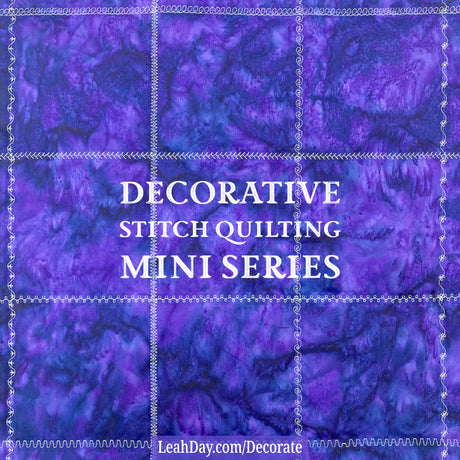
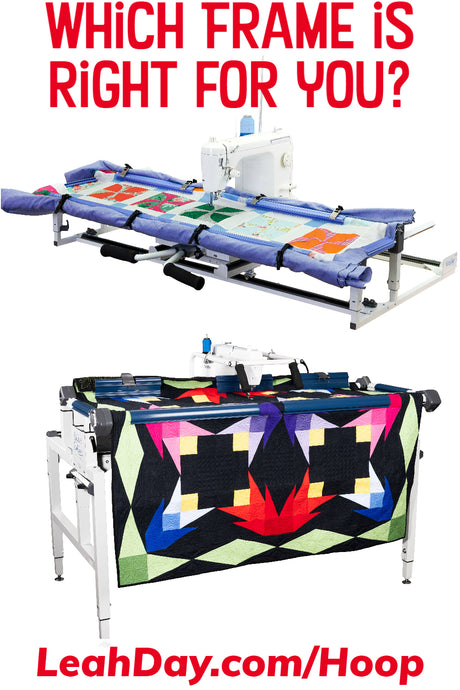
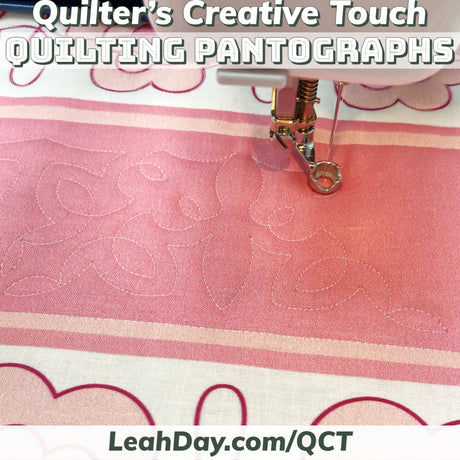
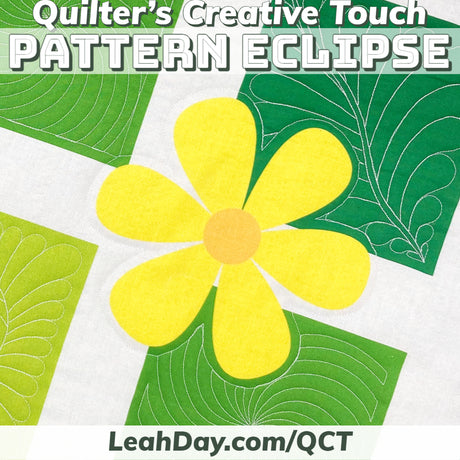
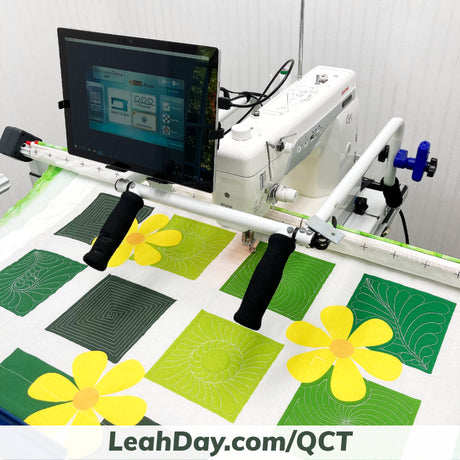

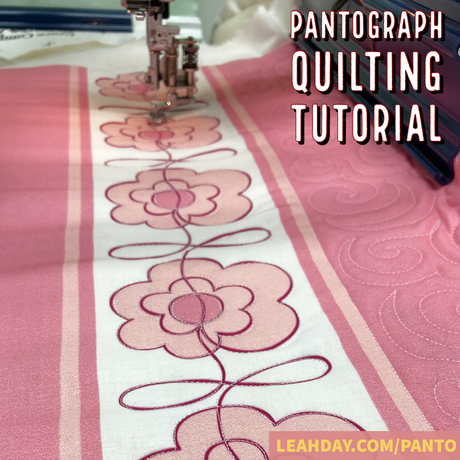
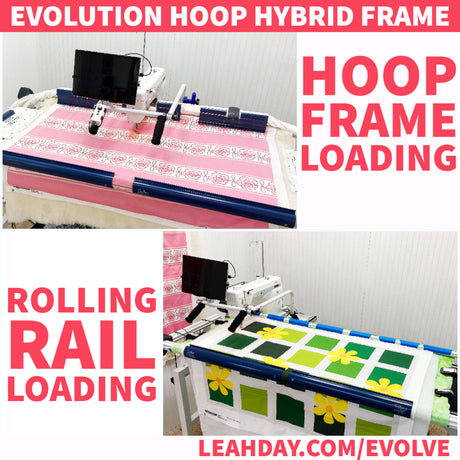
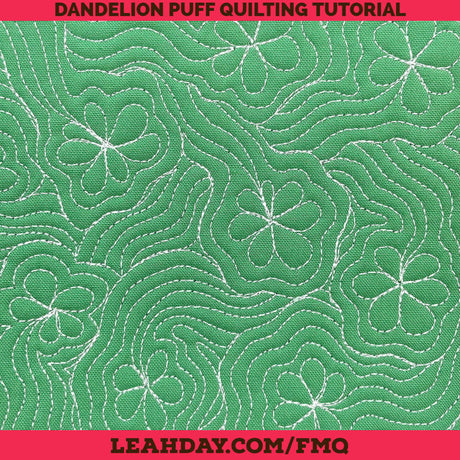
2 comments
Could you use a water disolveable thread and do the first stitching, then layer and do the quilting through all the layers with regular thread over that? I always wash my projects after they are done, before I give them away. If something is going to come apart, I want it to do it now, so I can repair it. At that point, the disolveable thread would disappear. Or, actually, I guess you could use the thread that disappears when you iron over it, if it was a wall hanging or something that isn’t going to be laundered. Wouldn’t that work pretty good, rather than having 2 sets of stitches, or having something slip while quilting?
This is really interesting. I’m making an applique quilt and trying to decide between free motion stitching the edges down (which will allow for some fraying and the stitches will likely be inconsistent in length) or the more tedious prospect of blanket stitching which would be more secure and look good. Now, I think I will try the blanket stitching after watching this video. Thanks, Leah!